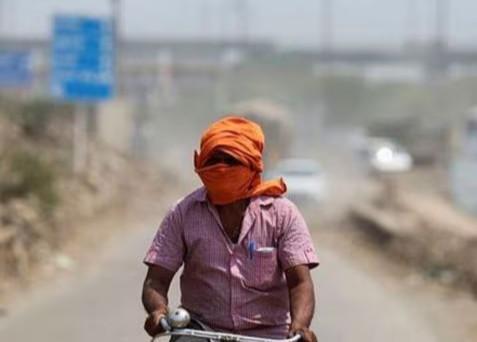
Extreme Heat Endangering Health & Productivity of Workers: Report
As the world grapples with the rising temperatures and unpredictable weather patterns, a recent report by the World Health Organisation (WHO) and the World Meteorological Organisation (WMO) has sounded a dire warning about the impact of extreme heat on worker productivity and health. According to the report, worker productivity drops by 2-3% for every degree above 20°C, making it a significant concern for industries and economies worldwide.
The report highlights the vulnerable populations that are disproportionately affected by extreme heat, including manual workers in agriculture and construction sectors, as well as children and the elderly in developing countries. These groups are more susceptible to heat-related illnesses, which can have severe and even life-threatening consequences.
Heatstroke, dehydration, and kidney dysfunction are just a few of the health risks associated with extreme heat. Prolonged exposure to high temperatures can lead to these conditions, which can have long-term effects on an individual’s health and wellbeing. Moreover, heat-related illnesses can also result in significant economic losses, particularly for industries that rely heavily on manual labor.
The report emphasizes that the impact of extreme heat is not limited to individual workers, but also has a ripple effect on the broader economy. As worker productivity declines, it can lead to reduced output, decreased economic growth, and increased costs for businesses and governments.
One of the most alarming aspects of the report is the disproportionate impact of extreme heat on vulnerable populations. Children, in particular, are at risk due to their smaller body size and developing physiology, making them more susceptible to heat-related illnesses. The elderly, too, are vulnerable due to age-related physiological changes that can affect their ability to regulate their body temperature.
In developing countries, the situation is even more dire. Many workers in these countries lack access to basic amenities like air conditioning, cooling systems, and adequate water supply, making them more susceptible to heat-related illnesses. Furthermore, the lack of awareness about heat-related risks and the absence of effective heat management strategies add to the vulnerability of these workers.
The report highlights the urgent need for governments, industries, and individuals to take proactive measures to mitigate the impact of extreme heat on worker productivity and health. Some of the recommended strategies include:
- Implementing heat management policies: Governments and employers can implement heat management policies that provide workers with regular breaks, access to cooling systems, and adequate hydration.
- Providing personal protective equipment: Workers in high-risk industries, such as construction and agriculture, can be provided with personal protective equipment like heat-resistant clothing and cooling vests.
- Enhancing awareness: Raising awareness about heat-related risks and the importance of heat management can help workers take proactive steps to protect themselves.
- Investing in heat-resistant infrastructure: Governments and industries can invest in heat-resistant infrastructure, such as cooling systems and shading structures, to reduce the impact of extreme heat on workers.
In conclusion, the report by the World Health Organisation and World Meteorological Organisation serves as a wake-up call for governments, industries, and individuals to take immediate action to mitigate the impact of extreme heat on worker productivity and health. By implementing effective heat management strategies and providing support to vulnerable populations, we can reduce the risks associated with extreme heat and ensure a healthier and more productive workforce.
Source: https://repository.inshorts.com/articles/en/PTI/45d9bd2d-ff57-417c-9e5f-831344bb34b0






